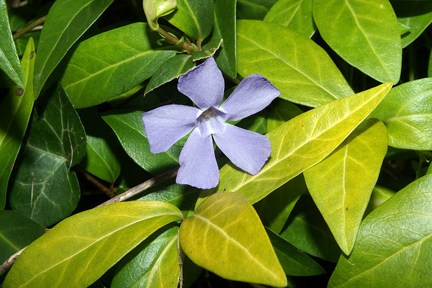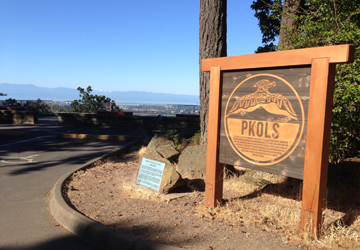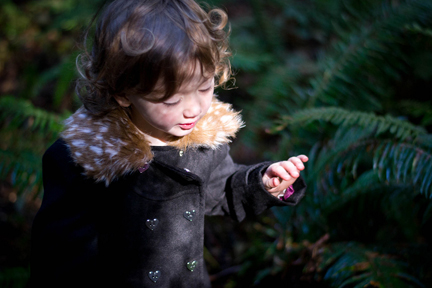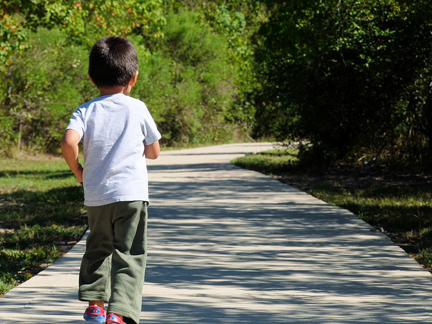She had moved to the area only the year before, lured by the climate, the year-round greenery, and Victoria’s reputation as a city of flowers. Her new home included a garden, with one rocky section that saw little sun. Moss would thrive there, but she wanted something more dramatic. More »
When University of Victoria anthropology and computer science students joined forces in 2011 with the Hul’qumi’num Treaty Group out of Ladysmith and local Elders to develop a video game, they were furthering the concept that names confer power and presence.
In the game, players embark on a virtual journey through Coast Salish landscapes, and explore uses of the land, historic place names, and traditional knowledge through video, audio, maps and photographs. Based on an earlier board game developed by the treaty group, the game serves as a step towards reclaiming culture, history, and presence in the region.
It followed two significant events in which First Nations cultural geography on the coast was reclaimed. In 2009, B.C.’s Queen Charlotte Islands were officially renamed Haida Gwaii as part of a historic reconciliation agreement between the province and the Haida Nation, and in 2010, the coastal waters off the province’s south coast became known officially as the Salish Sea.
Last year, the progression towards reclamation took another step. Local First Nations publicly proclaimed PKOLS as the original name of Mount Douglas, a site of cultural significance. They held a ceremony on the mountain, and commemorated the mountain’s deep roots in their history with a carved cedar sign near the summit. They have submitted a formal request to B.C.’s Geographic Names Office to have the old name reinstated.
They also announced plans to reclaim Mount Newton within their historical and cultural geography of place names. The mountain, or ȽÁU,WELNEW (place of refuge) is sacred as the site where the Saanich people escaped a great flood about 10,000 years ago.
Names are much more than mere labels. They signify culture and history. They indicate relationships and responsibilities between people and provide glimpses into long-held knowledge. They denote connections between people and places.
Benign or otherwise, renaming causes what existed before to be filtered through a new lens. It can obscure prior relationships, and even erase them….
Read the rest of this editorial at the Victoria Times Colonist….
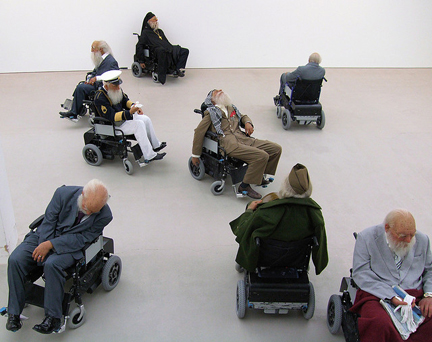
Old Person’s Home, an art exhibit at Saatchi Gallery, London. Photo © Jim Limwood, Creative Commons via flickr
Take 12 minutes.
Twelve minutes represent less than one per cent of a day.
If you work full-time, commute, ferry kids around, do chores, 12 minutes of free time allows you to catch your breath, prepare for the next crisis, or give your kids some undivided attention. Or 12 minutes means you’re late and you’ll be scrambling for the rest of the day.
If, however, your days lack the luxury of busy-ness—if, for example, you depend on others to help you dress, bathe, move about, arrange your social and recreational activities, and provide your meals—12 minutes may seem a mere eye blink in a day that stretches on and on like a geological epoch. Even if you subtract the eight hours of your day spent sleeping, the one hour spent bathing, dressing and personal care, three generous hours for eating and preparing to eat, you still face 12 hours of unalloted time. That’s 60 12-minute periods.
According to the Island Health spokesperson quoted in Katherine Dedyna’s April 9 article in this newspaper, 12 minutes is the minimum amount of physiotherapy or occupational therapy, nursing, or other “allied services” that each senior in residential care in the region receives each day from Island Health. Using $40 as an hourly average payment, Island Health funds 26 facilities almost $3,000 a year per resident, with services determined by the assessed needs of the individual residents. That means one facility may provide more hours of physiotherapy and another may arrange for more social-work hours per resident.
WIth the funds covering the spectrum of allied health services, most residents at most public long-term care facilities in the region receive much less than 12 minutes of physically active therapy daily, if any at all.
Seniors Advocate Isobel Mackenzie highlights that lack in her report, Placement, Drugs and Therapy: We Can Do Better. She reveals that fewer than 12 per cent of B.C. seniors in public residential care homes receive weekly physiotherapy, and only 22 per cent receive recreational therapy such as chair exercises or bingo.
What she doesn’t detail is that, in some residential care facilities, if you need help to stand up, you likely spend your days sitting. Care home staff encourage you to use a wheelchair….
Read the rest of this editorial at the Victoria Times Colonist.
Nature schools are popping up like mushrooms around here. The preschools and kindergartens immerse kids in local parks and green spaces for half-days and full-days at a time. The kids play outside. They stay outside. They learn about plants and animals, they look at bugs and pond critters, they make friends with trees.
Colwood’s Sangster Elementary program started the trend. Parents have even camped out overnight to register their children in the program.
Saanich’s preschool at Swan Lake Nature Sanctuary started September fully booked, and takes advantage of nature programs offered by sanctuary education staff. The Cridge Centre also started a nature preschool this year. Kiddie Kapers operates out of Commonwealth Recreation Centre, and Victoria Nature School runs out of Mount Doug park and Gordon Head Recreation Centre.
Programs like these put the kinder into the garten — the child into nature. They capitalize on the benefits of being active and outdoors on kids’ mental, physical and emotional health and development….
Read the rest of this editorial in the Victoria Times Colonist….

